Electrogravitics and its Application to Gravity Control
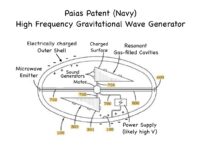
Zoom Lecture Given to the HGS Astronomical Society of London
on July 26, 2021
Title: The Discovery of Electrogravitics and its Application to Gravity Control More

Zoom Lecture Given to the HGS Astronomical Society of London
on July 26, 2021
Title: The Discovery of Electrogravitics and its Application to Gravity Control More
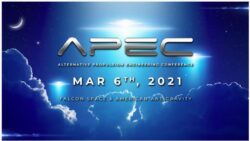
• 12:00pm PT: Paul LaViolette: The Pais Navy Gravity Engineering Patents
Paul will begin by discussing the electrogravity theory of subquantum kinetics and how it is different from other theories such as GR. We will examine how the Earth generates its gravity field and why this is related to the accumulation of a negative charge on its surface.
Then we will examine the Pais Navy UFO patents and explain how they work, how they can achieve phenomenal accelerations, inertialess forces when accelerating or turning right angles, and explore the possibility that they may achieve self cloaking, i.e., a state of invisibility. More

On Saturday March 6th at 3 PM EST (12 PM PST), I will be speaking at APEC (Antigravity Propulsion Engineering Conference) about the Pais patents which among other things describe the workings of an antigravity craft and gravity propulsion beam that the Navy has developed. The talk will be over Zoom and will be an illustrated presentation. It will last about an hour with about an hour for questions. A zoom link will be posted here shortly before the conference. The conference is sponsored by Tim Ventura whose American Antigravity website is: https://www.americanantigravity.com. More

SUNDAY FEBRUARY 14TH, 2021 at 11 PM EST Richard Syrett will interview Paul LaViolette about the U.S. Navy’s UFO patents on his radio talk show Strange Planet: https://www.strangeplanet.ca
Richard welcomes a physicist and author to discuss a U.S. Navy file dubbed the ‘UFO patents’ which reveals how military scientists spent hundreds of thousands of dollars on experiments involving nuclear fusion and electromagnetic fields as part of research into devastating future weapons. The documents claim a ‘Spacetime Modification Weapon’ could make the Hydrogen bomb seem like a ‘firecracker.’ More
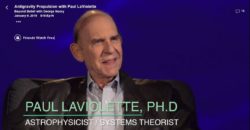
Paul LaViolette reveals the secrets of antigravity propulsion which could get us to Mars in five days. More
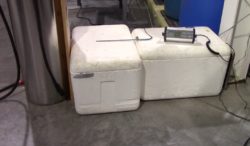
In August we carried out a helium test on version II and III of the Nassikas thruster at SuperPower Corp. in Schenectady, NY. We fixed the coil in a liquid helium dewar with its axis pointed in a horizontal direction. The dewar in turn was suspended from a ceiling beam so that it could move from side to side. Any side deflection of the dewar, due to any internally developed force, would have been measured on an electronic scale which was in mechanical contact with the wall of the dewar. More

Introducing the Nassikas Superconducting Thruster, Version III
Here we announce for the first time a new version of the Nassikas superconducting thruster which we believe will produce fantastic results at liquid helium temperatures. But to make this happen, we need your help; see below. More

Earlier this year we had conducted a crowd funding campaign to raise money in order to conduct a test of the Nassikas thruster II propulsion device (https://www.indiegogo.com/projects/superconducting-levitation-thruster#/). The coil was wound by Superpower Inc. (Schenectady, NY) in early October and tests were completed this past week at the Superpower facilities. More
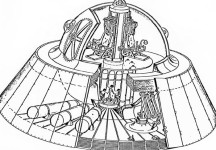
The above drawing was made by aerospace illustrator Mark McCandlish who based his sketch on the testimony of a friend of his who witnessed several such craft in operation. On November 12, 1988 his friend had the good fortune of viewing this vehicle and two other electrogravitic craft in a restricted hanger at Norton Air Force base while attending an air show that day. The crafts were being demonstrated to a select group of people who were given special access at the show. He observed the craft silently hovering a few feet above the ground. More
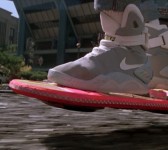
The Indiegogo crowd funding campaign for the Nassikas II levitation thruster ended on June 2nd (https://www.indiegogo.com/projects/superconducting-levitation-thruster/x/13625374#/). At that point a total of 285 backers had provided 60% of the needed $32,000 goal amount. More
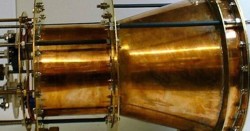
Recently, there have been many news reports circulating about the EMDrive, the reactionless propulsion thruster developed in 2001 by aerospace engineer Roger Shawyer. So far, six teams around the world have verified that the EM Drive indeed produces a reactionless thrust. More
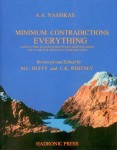
Prior to the discovery of his first thruster invention described elsewhere https://igg.me/at/levitation-thruster and https://etheric.com/nassikas-thruster-light-years-ahead-of-the-dawn-spacecraft-ion-propulsion-system/, Dr. Athanassios Nassikas had been for many years developing a philosophical methodology based on the principles of logic that would allow one to judge the desirability of physics theories. Namely, this approach led him to the conclusion that physics theories concocted with the minimum number of independent axioms or hypotheses would be the most desirable… More